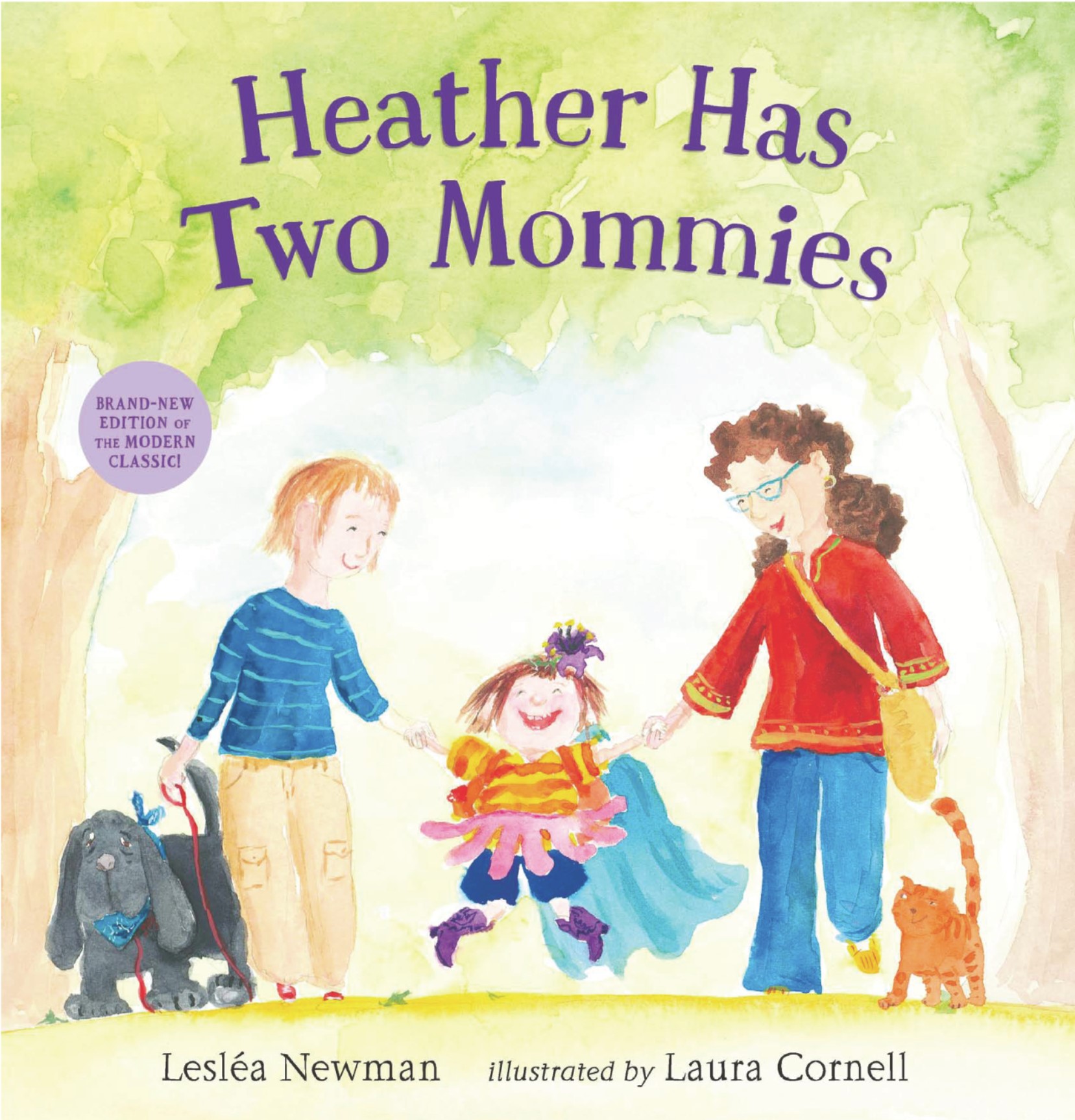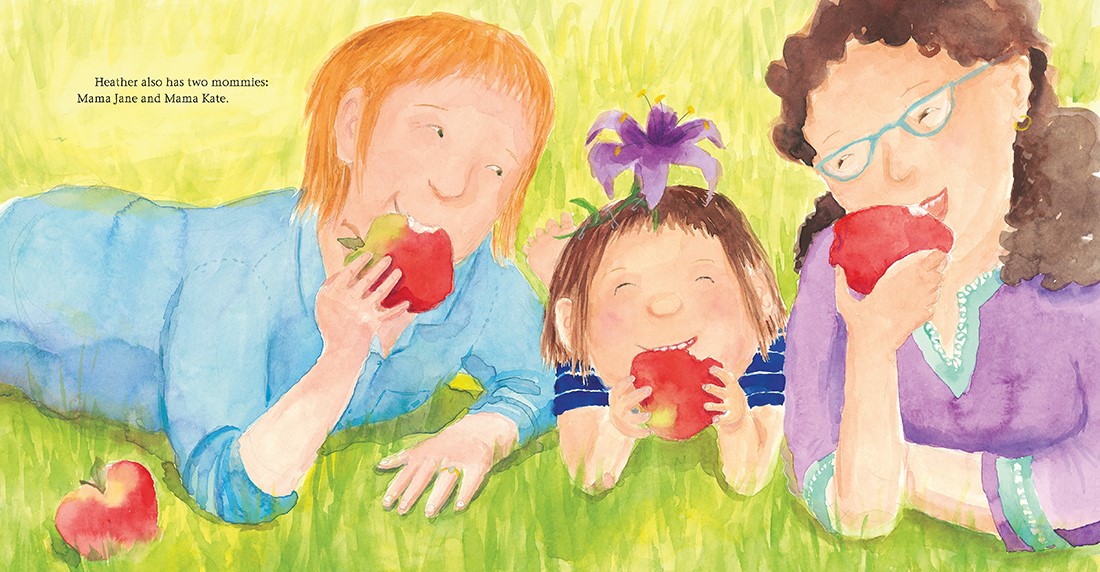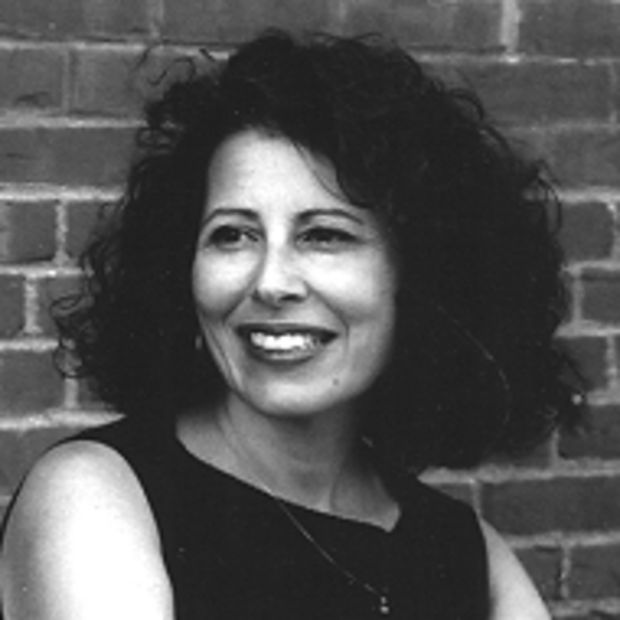Heather Has Two Mommies Turns 25
The world first met Heather, Mama Jane and Mama Kate in 1990, with the release of Lesléa Newman's Heather Has Two Mommies.  Since then, the book has received countless accolades and is a staple in many public, school, classroom and family libraries. Heather Has Two Mommies was (and still is) a beacon for many LGBT families looking to see themselves represented in children's literature. It was also a target for those who believed the content to be inappropriate for children and waged campaigns to ban and even burn the book in many areas.
Since then, the book has received countless accolades and is a staple in many public, school, classroom and family libraries. Heather Has Two Mommies was (and still is) a beacon for many LGBT families looking to see themselves represented in children's literature. It was also a target for those who believed the content to be inappropriate for children and waged campaigns to ban and even burn the book in many areas.
Most importantly, it helped spark a larger debate about the inclusion of family diversity and LGBT issues in K-12 schools that continues to this day. GLSEN has been at the forefront of the movement for safe and affirming schools for all students and families. which is why we are happy to celebrate the release of an updated and newly illustrated Heather Has Two Mommies.
Impacted by her experiences growing up and a conversation with with friends as an adult, Newman describes what led her to create Heather Has Two Mommies in the post below. Take a look and think about the stories you are sharing in your classroom through children's literature and what might be missing.
And, don't forget to check out Ready, Set, Respect: GLSEN's Elementary School Toolkit for lessons and tools to help you ensure that all students feel safe and respected in your classroom.
WINDOWS AND MIRRORS
By Lesléa Newman
I was born in the 1950’s and weaned on The Cat in the Hat, Dick and Jane, and The Little Engine that Could. One day I came home from the library with a new book, How the Grinch Stole Christmas. After I read it, I went to find my mother, who was in the kitchen making pot roast for dinner. I told her about the book and then asked, “Can we have a Christmas tree?"
“No,” she replied.
“Why not?”
“Because we’re Jewish.”
“So?”
“So we celebrate Chanukah.”
“That’s not fair!” I cried. Chanukah paled in comparison with Christmas. People who celebrated Christmas got to have a tree in the living room with lights all over it and presents underneath. Interesting visitors like Santa Claus and Rudolph the Red-Nosed Reindeer came to call. People who celebrated Christmas got to wander around the neighborhood, ring people’s doorbells, sing to them, and get asked inside for milk and cookies. All we got to do was light candles, say a prayer, and play with a wooden top called a dreidel that was hard to spin and always flopped on its side. We got one small present on the last day of the holiday and it was usually something to wear.
“I hate Chanukah,” I yelled. “ And I hate being Jewish,” I shrieked as I stomped up to my room.

The years went on, and I continued to wish that I wasn't Jewish. The books that I read continued to show families that were different than mine: The Bobbsey Twins, Little Women, Pippi Longstocking, Heidi, Girl of the Alps. I never read a children’s book that featured a character lighting a menorah for Chanukah, shaking a grogger for Purim, or eating matzo ball soup with her bubbe on Shabbat. None of the characters in my books even looked like me. No one had curly brown hair that tended toward frizzy, wide hips, or flat feet. More and more, I felt that there was something wrong with my family. There was something wrong with me.
I still remember the first time I encountered a Jewish children’s book. I was 32 years old, browsing the shelves of Beyond Words, an independent bookstore in Northampton, MA that unfortunately no longer exists. I don’t remember what I was looking for, but I do remember what I found: The Carp in the Bathtub, written by Barbara Cohen and illustrated by Joan Halpern. The family in the book was very similar to mine: they came from Brooklyn, they celebrated Passover, they ate gefilte fish! As I stood in the bookstore reading a children’s book about a Jewish family, tears streamed from my eyes. I was astonished at my strong reaction to the story. After all, I was now a grown woman. And yet the little girl inside me was seeing something she had never seen before and never even knew she so desperately needed: a reflection of herself and her family in a work of children’s literature. The message I received upon reading that book was that I matter. I am valuable. I have a place in the world. I belong.
A year later, all this came back to me in a flash when I was stopped on the street by an acquaintance named Amy. She looked me in the eye and said, “Lynn and I have no books to read to Sarah that show a family like ours. Somebody should write one.” And by the way she held my gaze, I knew by “somebody” she meant me. And I immediately agreed to do as she asked because I knew what Amy and Lynn’s daughter was going through. All Sarah’s books were windows that showed her a view of the world that was different than her own. None of her books were mirrors that showed her herself.
And so I wrote Heather Has Two Mommies, which features a little girl whose favorite number is two. She has two hands, two feet, two pets, and two moms. Other than the gender configuration of Heather’s parents, the family is very typical: on sunny days they go to the park. On rainy days they stay home and bake cookies. When Heather goes to school for the first time, she is asked about her daddy. Her wise teacher has all the children draw pictures of their families and after the class looks at each drawing, she reminds the children that, “It doesn't matter how many mommies or how many daddies your family has…..Each family is special. The most important thing about a family is that all the people in it love each other.”
I have followed Heather with other books that feature two-mom and two-dad families including Donovan’s Big Day, Mommy, Mama, and Me, and Daddy, Papa, and Me; books that smash gender stereotypes including A Fire Engine for Ruthie and The Boy Who Cried Fabulous; and Jewish children’s books including A Sweet Passover, Here is the World: A Year of Jewish Holidays, and Runaway Dreidel!. While each book is unique, my goal for each is the same. With each book, I hope to tell the reader: you are valuable. No matter where you come from, no matter what your traditions are, no matter who’s in your family, no matter what you look like. The world is a better place because you are in it. You have a place. You belong.

Lesléa Newman is the author of 65 books for readers of all ages including the short story collection, A Letter to Harvey Milk, the poetry collection, Still Life With Buddy, the young adult novel, Jailbait, the middle-grade novel, Hachiko Waits, the novel-in-verse, October Mourning: A Song for Matthew Shepard, the poetry collection, I Carry My Mother, and the children’s classic Heather Has Two Mommies. Her literary awards include poetry fellowships from the National Endowment for the Arts and the Massachusetts Artists Foundation. Nine of her books have been Lambda Literary Award finalists. From 2008-2010, she served as the poet laureate of Northampton, MA. Currently she is a faculty member of Spalding University’s low-residency MFA in Writing program.
In addition to being an author, Newman has been an LGBT activist for more than 25 years, speaking out for equal rights at conferences, college campuses, high schools, libraries, and community centers. She is happily (and legally!) married to Mary Vazquez.
Visit Newman online at www.lesleakids.com
Related Children's Books by Lesléa Newman
Donovan's Big Day
Mommy, Mama, and Me and Daddy, Papa, and Me
A Fire Engine for Ruthie
The Boy Who Cried Fabulous
Felicia's Favorite Story
High School Educators! Check out Newman's book October Mourning: A Song for Matthew Shepard and its accompany resource, He Continues to Make a Difference: Commemorating the Life of Matthew Shepard. Developed in collaboration with GLSEN, the Matthew Shepard Foundation and Candlewick Press and using Newman’s award-winning book of poetry, He Continues to Make a Difference is a resource for high school educators that includes information and best practices for supporting LGBT students and developing an LGBT-inclusive curriculum, along with classroom resources and lessons aligned with ELA Common Core State Standards.
